Trapped inside a HUMVEE engulfed in flames, with his skin burning, and taking small arms fire, Marine Anson Roberts crawled his way out to safety. ‘Never quit’ has always been his motto for life and still is. Nicknamed ‘Nubs,’ Anson is not only a survivor of extreme hardship but an example of a can-do attitude.
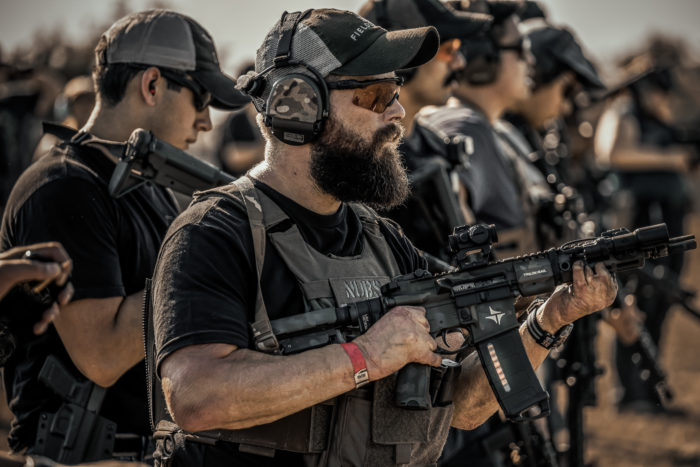
Joining the USMC
Raised by his Aunt and Uncle in his formative years, Anson’s upbringing in Ohio was anything but destined for greatness in the Marines. “I won’t try to sugar-coat it, I was a horrible student,” says Anson. “I had no interest in traditional schooling. I’d basically perform at a level that was good enough to squeak by and still play sports.” One night after partying with his friends, Anson woke up to a Marine recruiter’s card stuck inside his front door. “I took this as a sign that maybe I needed to get my act together and called the number the next morning.”
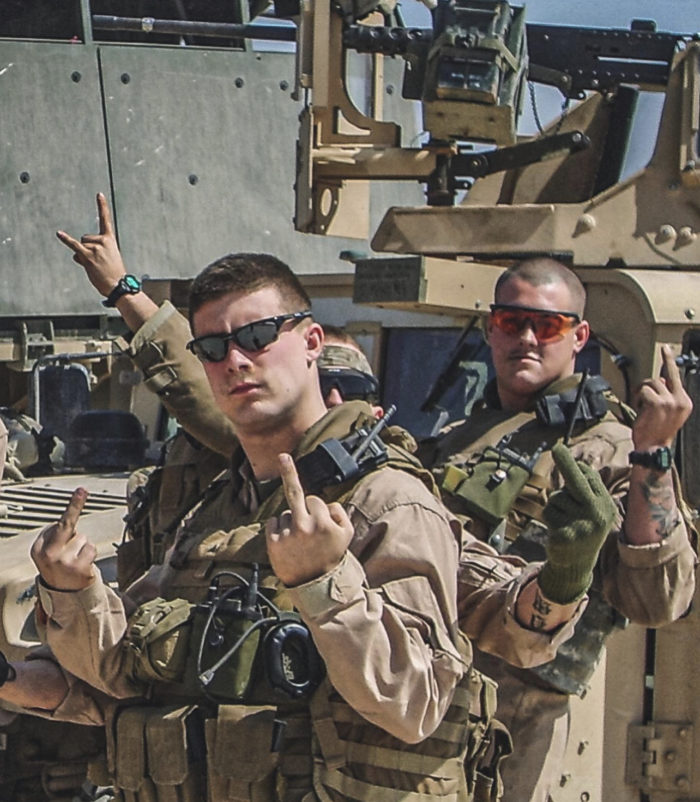

With his guardian’s permission, Anson signed his Marine infantry contract as a high school Junior. The day after his graduation in 2005, he left for Marine Corp Recruit Depot (MCRD) Paris Island, SC. “I’d like to think I joined because of a higher purpose, but maybe it was just fate. Whatever it was, it’s brought me on a wonderful journey that I wouldn’t change for anything.” Anson completed his recruit training at MCRD and then was assigned to 1/9 Weapons Company at Camp Lejeune, NC. Later assigned to the 6th Marine Regiment and deploying with Regimental Combat Team (RCT) 6. Anson describes, “being so young and dumb you think you know everything, so joining the Marines is a huge gut check for a punk kid who never applied himself. You take all of the tools they provide and then apply them to your life, habits, and patterns.”
April 13th, 2007
In 2007, his life would forever be changed by a single mission in the heart of Iraq. Anson was assigned to the RCT-6 Explosive Ordinance Disposal (EOD) Security Team in Habbaniyah, IRAQ. Their mission is to support Marine Ground Units by detecting, locating, neutralizing, and disposing of hazards from the area of operation. In a security element of three gun-trucks (HUMVEEs), and one Mine-Resistant Ambush Protected Vehicle (MRAP), Anson somehow drew the short straw. He was selected as the lead driver of the security element. Historically, the lead driver of any security element is most at risk to threats. From the enemy’s perspective, the most effective way to stop a security convoy is to eliminate the lead vehicle. Create a traffic jam, putting the remaining vehicles at standstill for an easy target.
On April 13th, 2007, the security element was tasked with a mission like any other day. Ironically, April 13th was also Friday the 13th.
Anson describes:
Once underway we started clearing a route for other units to be able to follow on after. Every 300 to 600 yards we would have to stop and take care of an Improvised Explosive Device. It was becoming a long-drawn-out push on an extremely hot day. We started to advance our element further down the road when we saw some men on rooftops with AK’s. We stopped and got the trucks into position waiting to be engaged.
Our dismounts start pushing towards the compound, and as soon as they approached, they became engaged and stuck inside the house. I then requested to put the 50. cal in position to better support by fire the Marines who were engaged in the compound. As soon as I maneuvered my gun truck down the towards the compound a Massive IED exploded directly underneath sending us airborne. We were sitting in a kill zone of daisy chained IED’s all around us.
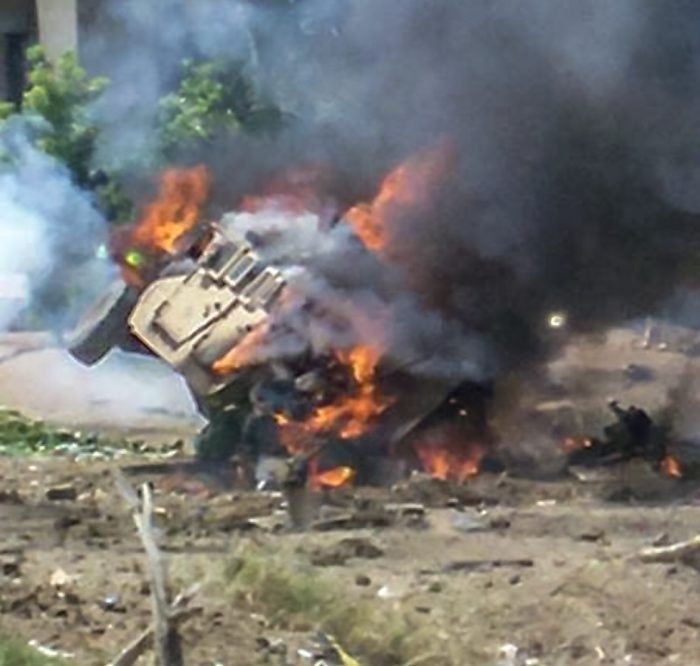

There are many types of an Improvised Explosive Device (IED) used across our historical battlefield. Used in conflicts such as World War II, and Vietnam, they’ve become extremely sophisticated during the Global War on Terrorism (GWOT). Some are operated on a time-switch, a device which creates a countdown until detonation. Others are operated on command, using tethered options such as a pull string made from fishing wire. A non-tethered connection such as a cell phone, or a remote device, is frequently used. The most common IED is a victim-operated bomb, designed to explode when the activated by the victim. For Anson and his teammates, the IED could have been either a pressure activated or detonated via a remote device.
Anson continues:
I was trapped inside of the burning wreckage knocked unconscious. Once I came to, the door to the truck was completely stuck and would not open at all. Meanwhile, the vehicle I am in has a ton of ammunition and premade charges inside for our mission. Now I am trapped inside a fully engulfed inferno with no way out it looks like.
For a moment, I am able to see sunlight pouring in over the flames and smoke over to my right side. The vehicle has had its right rear section sheared off. I was able to climb over the radio stack and out the side of the vehicle where it had been opened like a tin can. As soon as I go to stand up, I am immediately tackled to the ground by the EOD Corpsman. Who starts to immediately pat me down and making sure I am ok. By this time, we now start taking rounds all around us from the elevated rooftop position. Thankfully the 2 remaining gun trucks began firing the 240 bravo and 50.cal giving us covering fire to make our escape back up to our team on the elevated road.
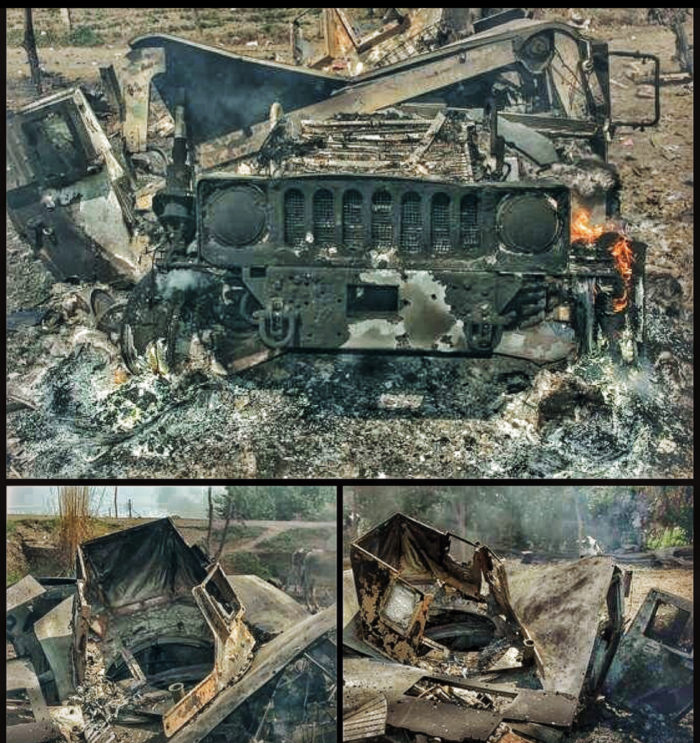

Doc Freeburg put me into the MRAP where he was able to get all my kit cut off even though I was begging him not to. He was able to stabilize me and get me ready for the medevac helicopter, but the catch was we had to return to our starting point of the day. Once in CH-46 helicopter they medevac’d me and my gunner to Al Taqaddum Airbase. As soon as the helo touched down on the flight line I bolted out the rear hatch running down the flight line in just silkies and boots to the trauma bay. This is the last thing I remember from being in country, name rank unit and lights out.
Aftermath
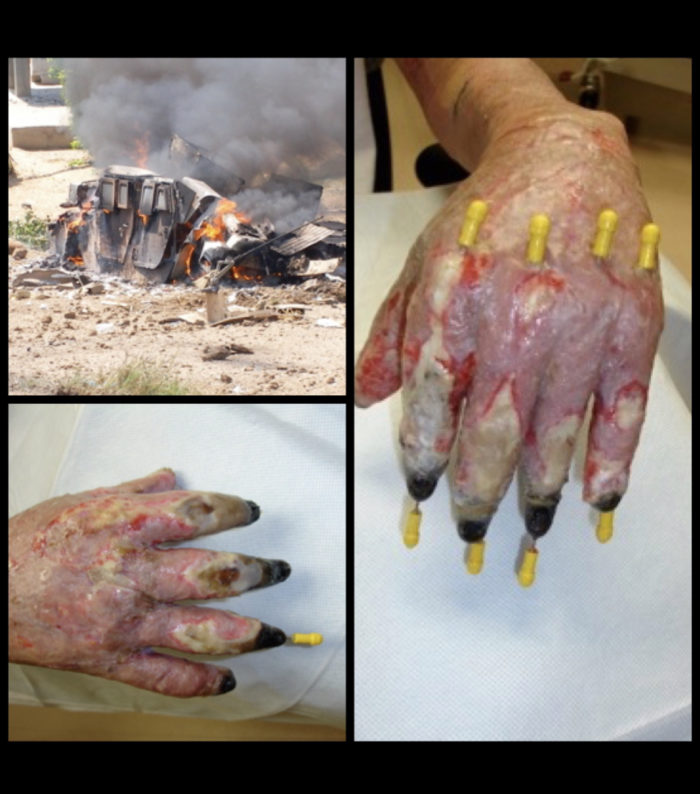

Anson sustained 1st, 2nd, and 3rd degree burns on 30% of his body. The most extensive injuries occurring to both his left and right hands. His entire hands were 3rd and 2nd degree, leading to the amputation of most of his fingers and significant deformation. Multiple surgeries and skin grafts have followed on both hands and legs. “Once I seemed to recover from one procedure another one would be needed. Learning to deal with this process was extremely hard at first. The mental lows you experience while being told you’d never be ‘normal’ again take its toll.”
Anson was sent to Brooke Army Medical Center (BAMC) in Fort Sam Houston, TX, to complete most of his recovery. Grateful to the staff, Anson describes, “I had some of the most caring and knowledgeable medical staff who helped push me to return to life. They pushed me every day I was there to work on being able to live my life in decency again. I had to adapt and learn how to do everything in daily life we take for granted. Eating, bathing and dressing myself were a baseline of things I wanted to do again.” Upon hospital discharge, Anson then medically retired from the Marine Corp in 2009.
…it has molded me into someone that has learned to adapt and overcome any obstacle in my way.
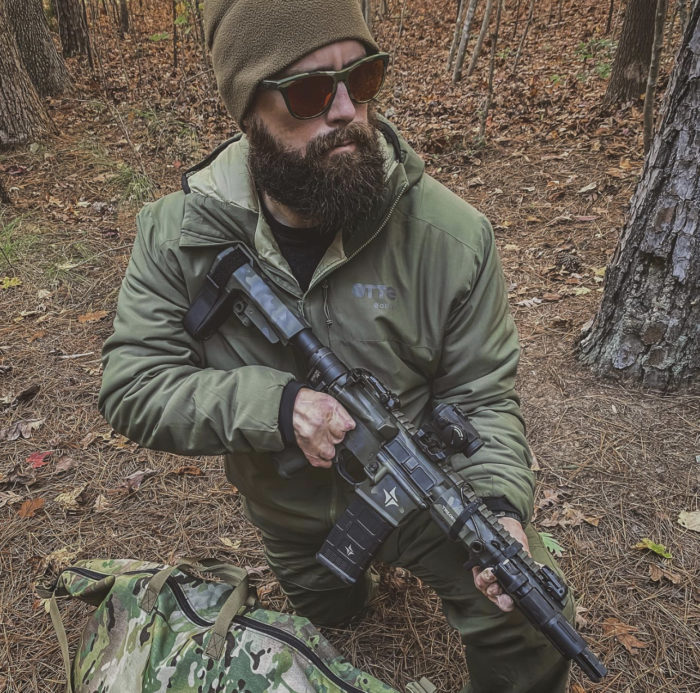

The Path Forward
Everyone responds to trauma in different ways. For some, the adversity breaks them. For others, it builds them into a stronger version of themselves they never knew existed. Anson is clearly the latter. “At first I thought my injuries would be very hindering and detrimental to living a so-called ‘normal life,’ whatever that means. On the contrary, it’s molded me into someone that has learned to adapt and overcome any obstacle in my way.”
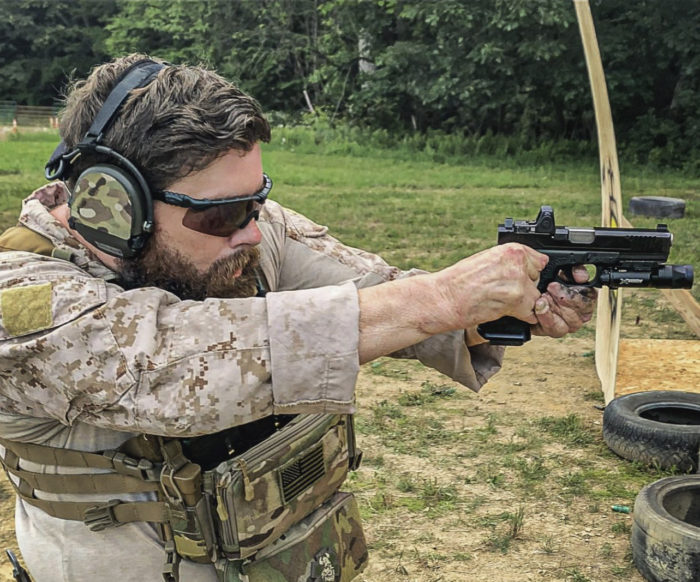

Since his injury, Anson has graduated with his bachelor’s degree in history from Ohio State University. He has also gone on to collaborate with various brands across the defense industry to include Triarc Systems, Eotech, Mutiny Metals, and more. With a very strong Instagram following, Anson finds aspects of social media very cathartic. “Social media has allowed me to come out of my shell and not be ashamed of my injuries or the way I look. It’s something I have just embraced as part of my journey and want to share it with the world now. Being able to have a platform like Instagram has allowed me to share my life experiences with so many people.” Through this experience, Anson has been able to be proud of the battle scars thus giving rise to his nickname ‘Nubs.’
What does the future hold for Nubs?
“Ultimately I’d love to get into motivational speaking and start sharing my story with as many people as possible. Getting my story out there for someone who might be in that dark place, might just bring them back from some a devastating injury or a personal issue their life.”

